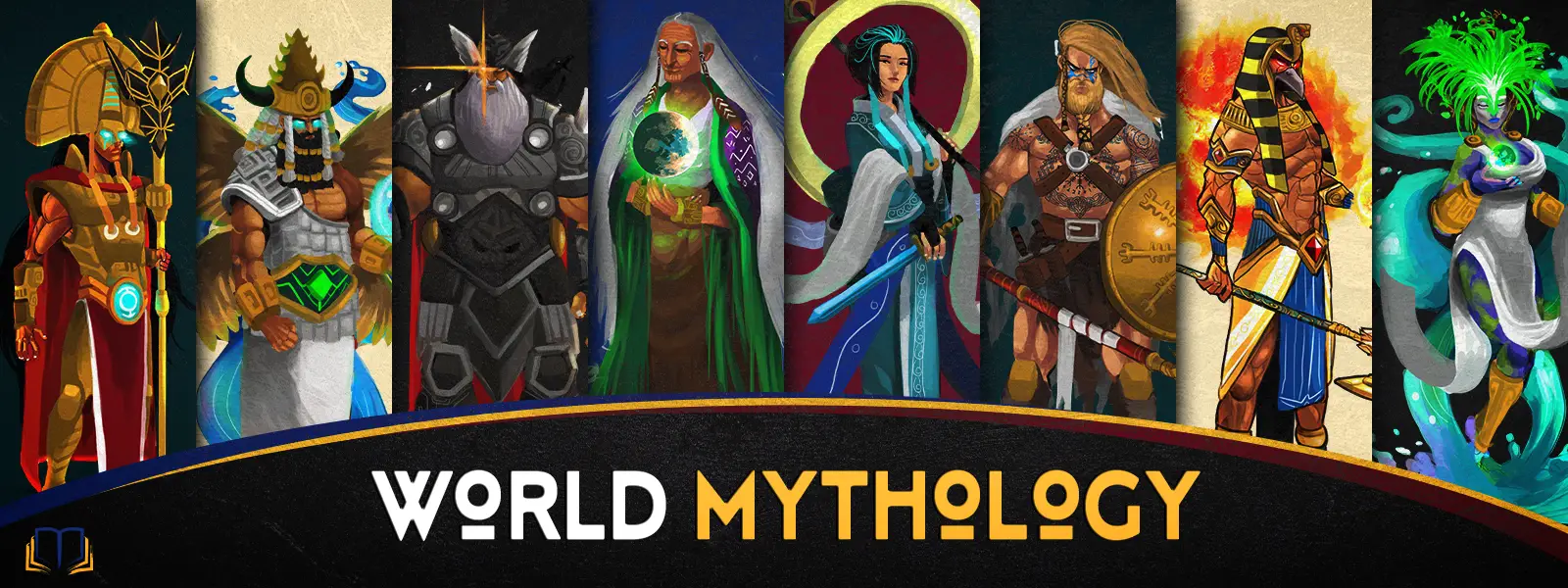Mythology always has an important role in society; myths provide explanations for things that cannot be explained and give people hope during difficult times.
Even in modern times, we turn to our superheroes and science fiction epics, our own versions of mythology, for comfort. All use mythic themes.
The world is home to a wide variety of cultures and beliefs. Whether you are looking for the stories of Native Americans, ancient Greek Mythology or Japanese folklore, we have compiled a list of some of the most popular mythologies from around the world!
Let’s dive in with some of our favorites:
- What is World Mythology?
- Greek Mythology
- Norse Mythology
- Egyptian Mythology
- Celtic Mythology
- Mesopotamian Mythology
- African Mythology
- Hindu Mythology
- Slavic Mythology
- Chinese Mythology
- Japanese Mythology
- Polynesian Mythology
- Native American Mythology
- Mesoamerican Mythology
- South American Mythology
- Abrahamic Mythology
- Arthurian Legends
By the way, if you want to learn more about world mythology, my top recommendation is to subscribe to Wondrium. They are the only online resource with a decent course on mythology anywhere that I know of. It’s over 30 hours long and yes, I’ve watched every second of it.
Plus, if you use my link (affiliate), then you get an additional 20% off an annual subscription. Check it out!
What is World Mythology?
World Mythology is the global term for all of the myths found throughout history across the entire world. These stories take place across all cultures and time periods, and are usually deeply meaningful to the culture they come from.
While many debate the meaning of “myth”, at MythBank, I define them as ancient stories that held/hold deep societal meaning. This is, admittedly a very broad definition, but it allows me to cover a broad array of topics on this site.
If we were to narrow the definition a little more, I would define the following:
- Myth: A story with deep societal meaning, usually dealing with god(s) and explaining the origin of things.
- Legend: A story with possible historical origins, though likely inflated over time.
- Folklore: Stories not meant to be taken as historical, involving the blending of the supernatural with regular people.
- Fairytale: The same as a folktale, but clearly written down by a specific author.
- Mythology: A vast collection of stories and lore that can span all four of the above types of storytelling.
At MythBank, I cover all of it, and this page is a great place to start exploring what I have.
Greek Mythology
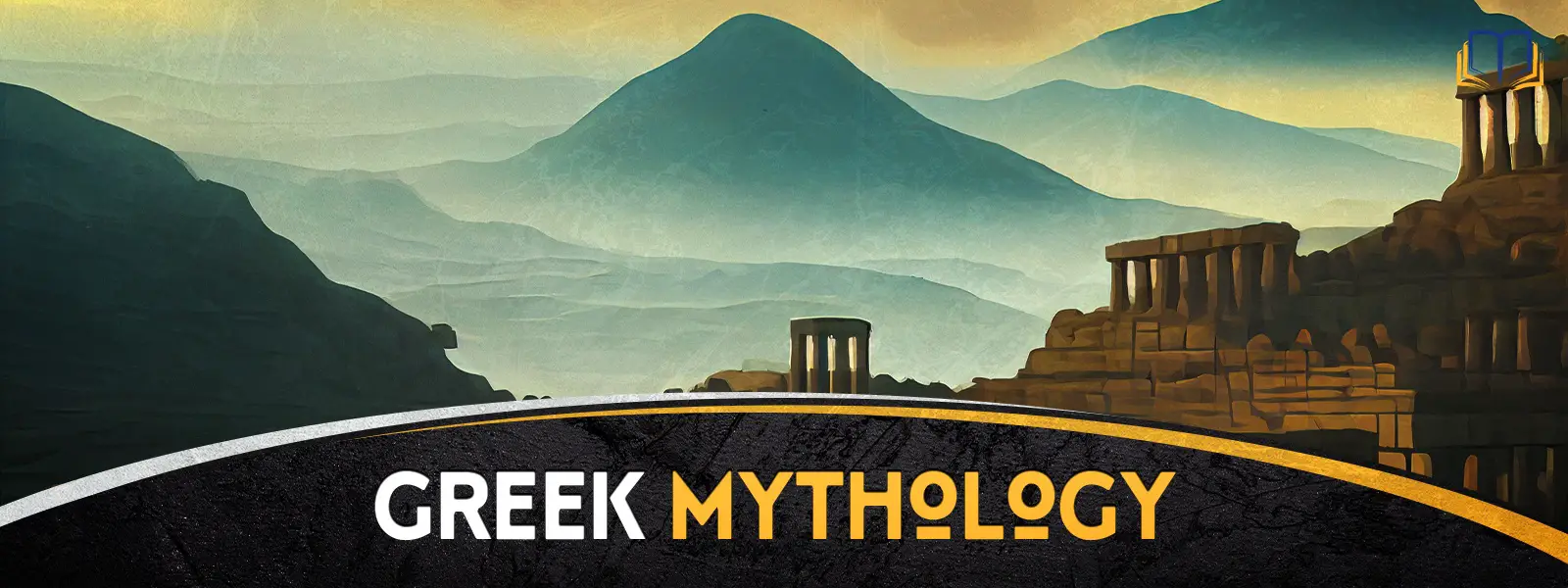
Greek mythology is filled with fascinating stories and characters. It centers around the gods and goddesses of ancient Greece, such as Zeus, Athena, Apollo, and Aphrodite, and their interactions with mortals. These myths often revolve around themes of love, war, and betrayal.
One of the most well-known Greek myths is the story of the Trojan War. It tells the tale of the beautiful Helen, who was abducted by the Trojan prince Paris, leading to a war between the city of Troy and the Greeks. The war ended when the Greeks used the Trojan Horse to trick the Trojans and conquer their city.
Another important figure in Greek mythology is the hero Hercules, who was the son of Zeus and a mortal woman. He is famous for his incredible strength and for completing the Twelve Labors, a series of difficult tasks assigned to him by the gods.
The Greek myths continue to inspire and captivate people to this day through literature, art, and popular culture.
Some related mythologies include:
- Roman Mythology
- Etruscan Mythology
Norse Mythology
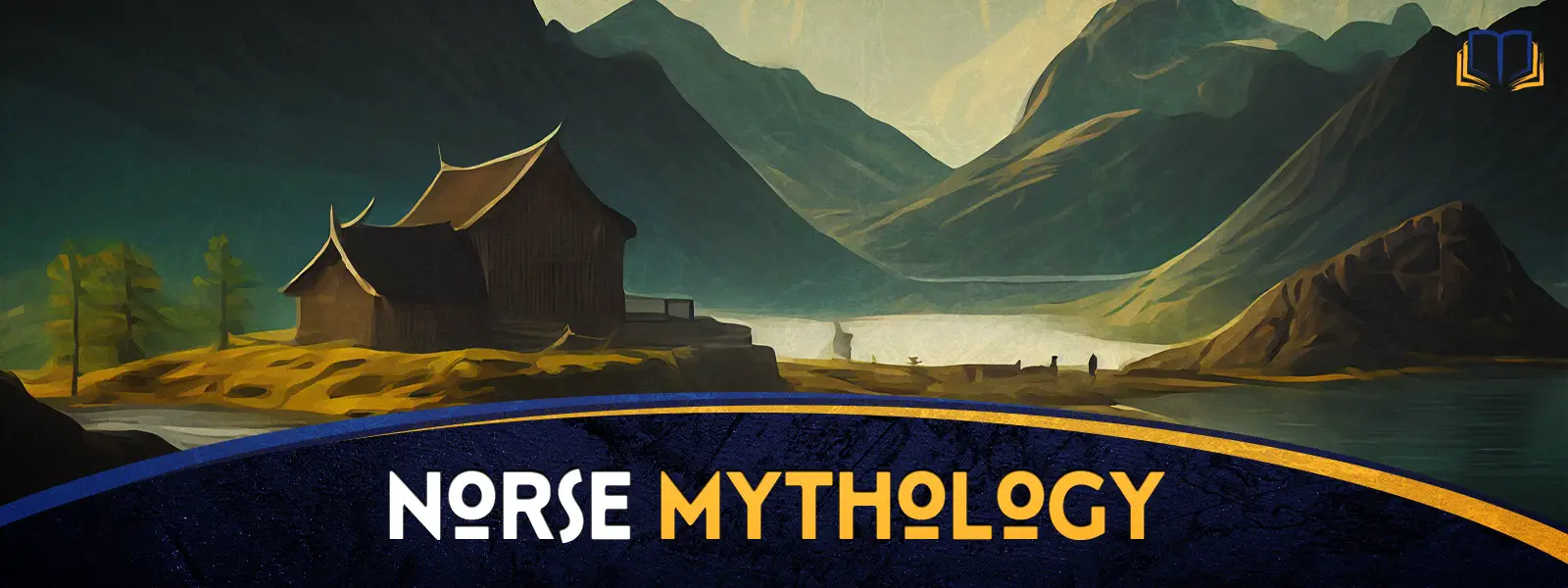
Norse mythology is filled with thrilling stories and epic heroes. It centers around the gods and goddesses of ancient Scandinavia, such as Odin, Thor, and Freya, and their interactions with mortals and other beings. These myths often revolve around themes of fate, war, and the end of the world.
One of the most well-known Norse myths is the story of Ragnarok, the final battle between the gods and their enemies. It is said that in the end, the world will be destroyed and reborn, with only a few survivors left to start a new world.
Another important figure in Norse mythology is the god Thor, who is known for his strength and his weapon, the mighty hammer Mjolnir. He is often depicted as a fierce warrior who fights against giants and other monsters to protect the people of Midgard, the mortal world.
The Norse myths continue to inspire and captivate people to this day through literature, art, and popular culture.
Some related mythologies include:
- Finnic Mythology
- Germanic Mythology
Egyptian Mythology
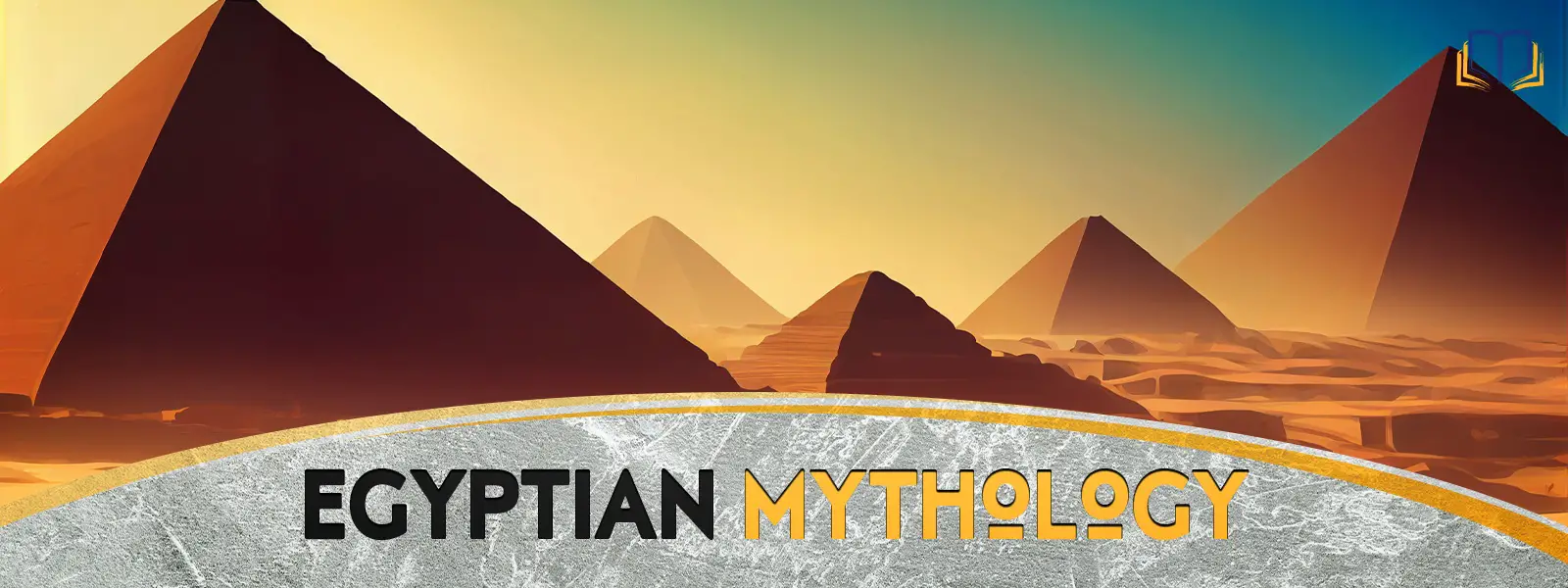
Egyptian mythology is filled with fascinating stories and powerful gods. It centers around the deities of ancient Egypt, such as Ra, Isis, and Anubis, and their interactions with the pharaohs and the people of Egypt. These myths often revolve around themes of death, the afterlife, and the relationship between Order and Chaos.
One of the most well-known Egyptian myths is the story of the god Osiris, who was murdered by his brother Set but was brought back to life by his wife Isis. Osiris then became the god of the underworld and the afterlife, where he judged the souls of the dead.
Another important figure in Egyptian mythology is the sun god Ra, who was the most powerful deity in the pantheon. He was said to travel across the sky in a boat during the day and through the underworld at night.
The Egyptian myths continue to inspire and captivate people to this day through literature, art, and popular culture.
Some related mythologies include:
- Berber Mythology
- Dedun (Nubian) Mythology
Celtic Mythology
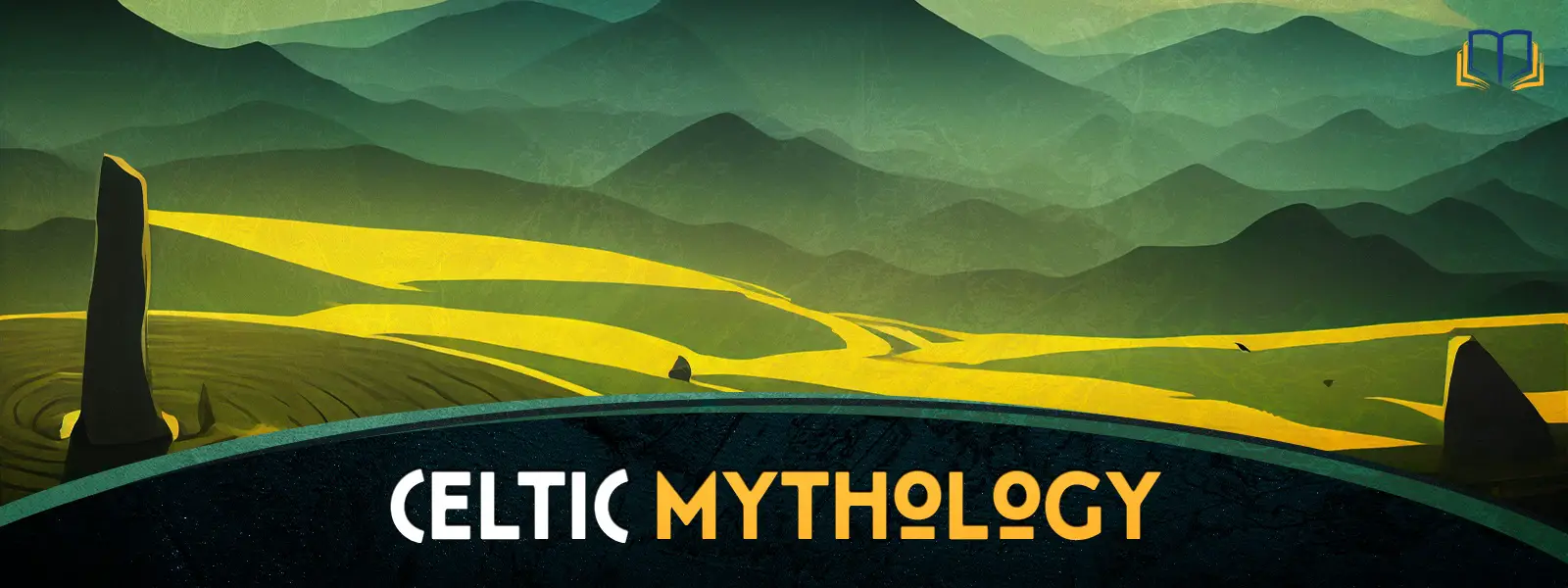
Celtic mythology is filled with rich and fascinating stories of gods, heroes, and monsters. It centers around the myths and legends of the ancient Celtic people, who lived in what is now Ireland, Scotland, Wales, and other parts of Europe. These myths often revolve around themes of magic, nature, and the cycle of life.
One of the most well-known Celtic myths is the story of the hero Cú Chulainn, who was the greatest warrior of Ulster. He was known for his incredible strength and courage, and for his weapon, the Gae Bolg, which could strike its enemies from a distance.
Another important figure in Celtic mythology is the god Lugh, who was the god of the sun, the sky, and the arts. He was said to be a skilled warrior, a master craftsman, and a powerful magician.
Celtic mythology is still important today because of the role it plays in modern day neopaganism, which includes people who practice Gaelic reconstructionism and Gaelic revivalism as well as Wiccans or witches.
There are even Celtic festivals that take place every year to celebrate these myths!
Some included and related mythologies include:
- Basque mythology
- Brythonic mythology
- Breton mythology
- Cornish mythology
- Welsh mythology
- Cantabrian mythology
- Goidelic (Gaelic) mythology
- Irish mythology
- Manx mythology
- Scottish mythology
- Lusitanian mythology
- Spanish mythology
Mesopotamian Mythology
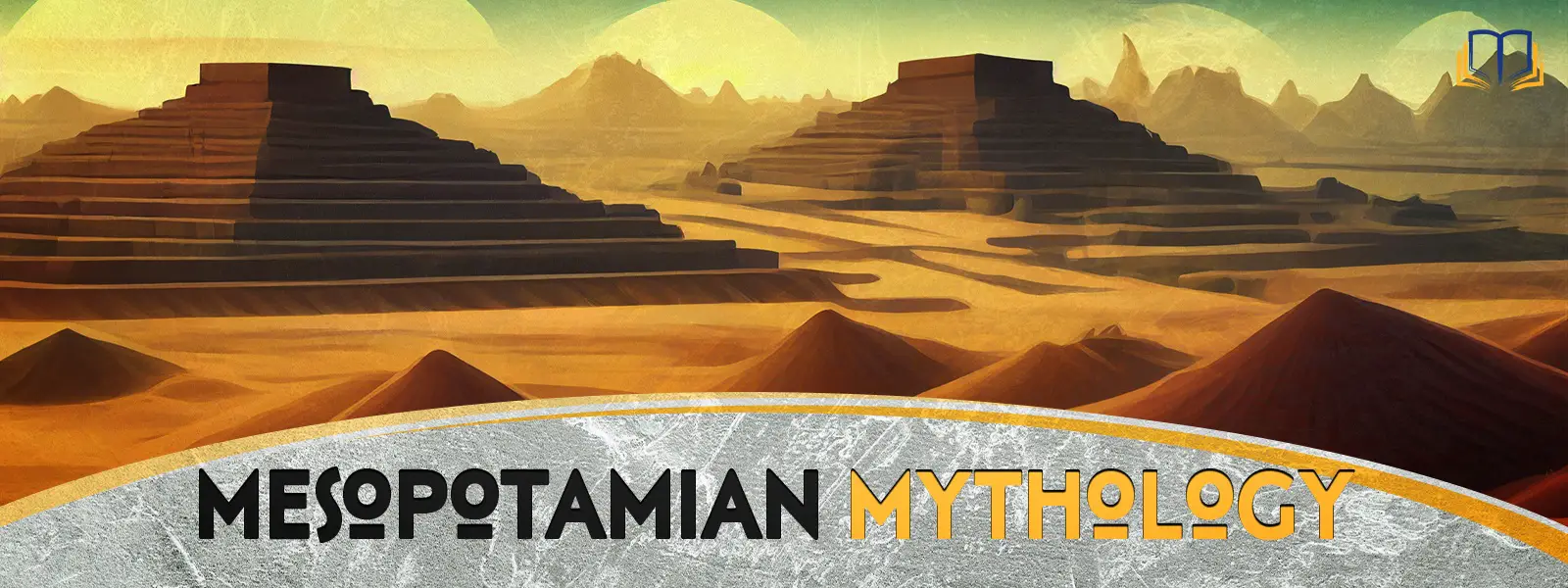
Mesopotamian mythology, which dates back many millennia, is still relevant today. Mesopotamia was the place where civilization began and it’s one of the oldest civilizations in history, so their myths are very old too! The term “Mesopotamian Mythology” refers to all myths from Sumer, Akkad, Assyria & Babylonia who were part of modern day Iraq.
One of the most well-known Mesopotamian myths is the story of the god Marduk, who rose to power and became the king of the gods. He was said to have created the world and to have defeated the monstrous sea-dragon Tiamat, who threatened to destroy all of creation.
Another important figure in Mesopotamian mythology is the god Enlil, who was the god of the air and the storms. He was said to be the most powerful of the gods, and to have the ability to control the fates of mortals.
The Epic of Gilgamesh is also important in Babylonian mythology, comprising the world’s first superhero story.
Mesopotamian Mythology has been passed down through time because it influenced many cultures including Christians & Jews with tales such as the creation myth from Genesis as well as the flood myths.
Some included and related mythologies include:
- Elamite mythology
- Hittite mythology
- Iranian mythology
- Kurdish mythology
- Persian mythology
- Babylonian mythology
- Sumerian mythology
- Armenian mythology
- Circassian mythology
- Georgian mythology
- Ossetian mythology
- Vainakh mythology
African Mythology
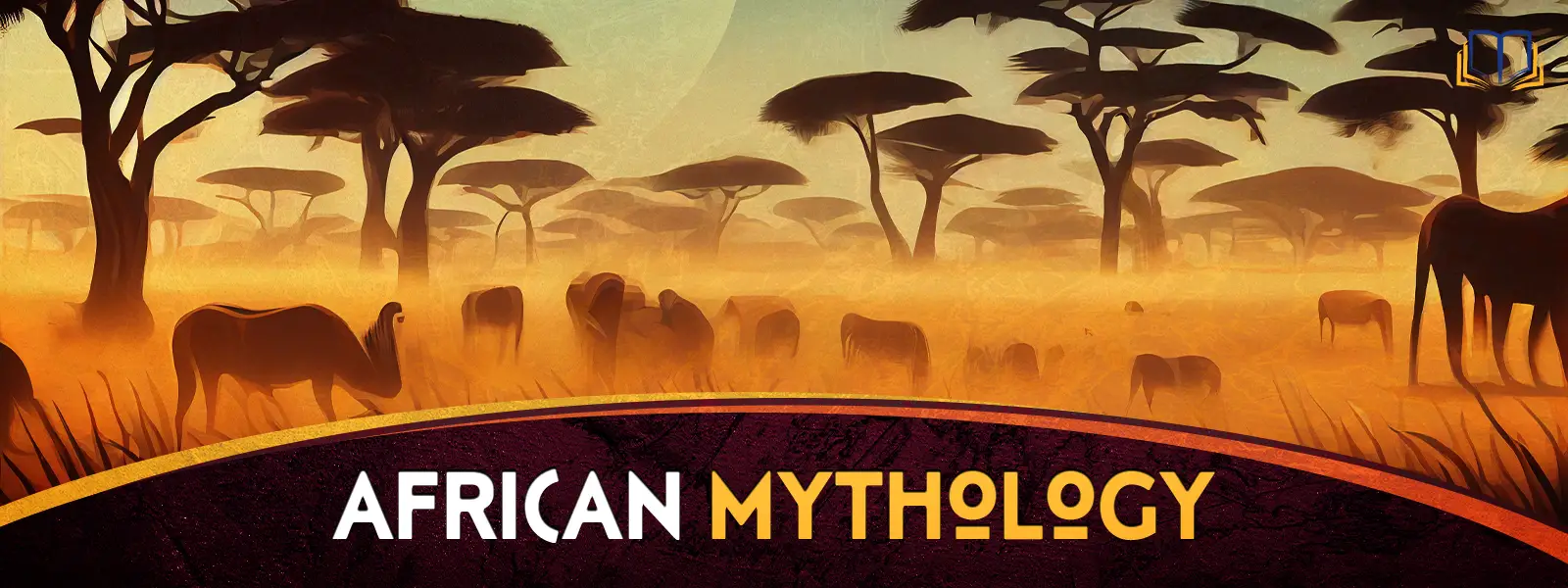
African mythology is filled with rich and diverse stories of gods, spirits, and heroes. It centers around the myths and legends of the many different African cultures, each with its own unique beliefs and traditions. These myths often revolve around themes of nature, the ancestors, and the power of the spirit world.
One of the most well-known African myths is the story of the trickster god Anansi, who is a spider in many West African traditions. He is known for his cunning and his ability to outsmart other animals and even the gods.
Another important figure in African mythology is the god Ogun, who is the god of iron and war in many West African traditions. He is said to be a fierce warrior and a skilled blacksmith, and to be able to control the forces of nature.
African mythology is very old and it still influences the cultures that exist today. It also had a major impact on many religions, which is why it’s important to be aware of these beliefs so you can understand them.
Some of these many African mythologies include:
- Central Africa
- Baluba mythology
- Bushongo mythology
- Kongo mythology
- Lugbara mythology
- Mbuti mythology
- East Africa
- Dinka mythology
- Kalenjin mythology
- Lotuko mythology
- Maasai mythology
- Somali mythology
- Southern Africa
- Lozi mythology
- Malagasy mythology
- San mythology
- Tumbuka mythology
- Zulu mythology
- West Africa
- Akan mythology
- Dahomean mythology
- Dogon mythology
- Efik mythology
- Igbo mythology
- Serer mythology
- Urhobo mythology
- Yoruba mythology
- African Diasporic
- Candomblé
- Hoodoo
- Kumina
- Obeah
- Palo
- Quimbanda
- Santería
- Umbanda
- Vodou
Hindu Mythology
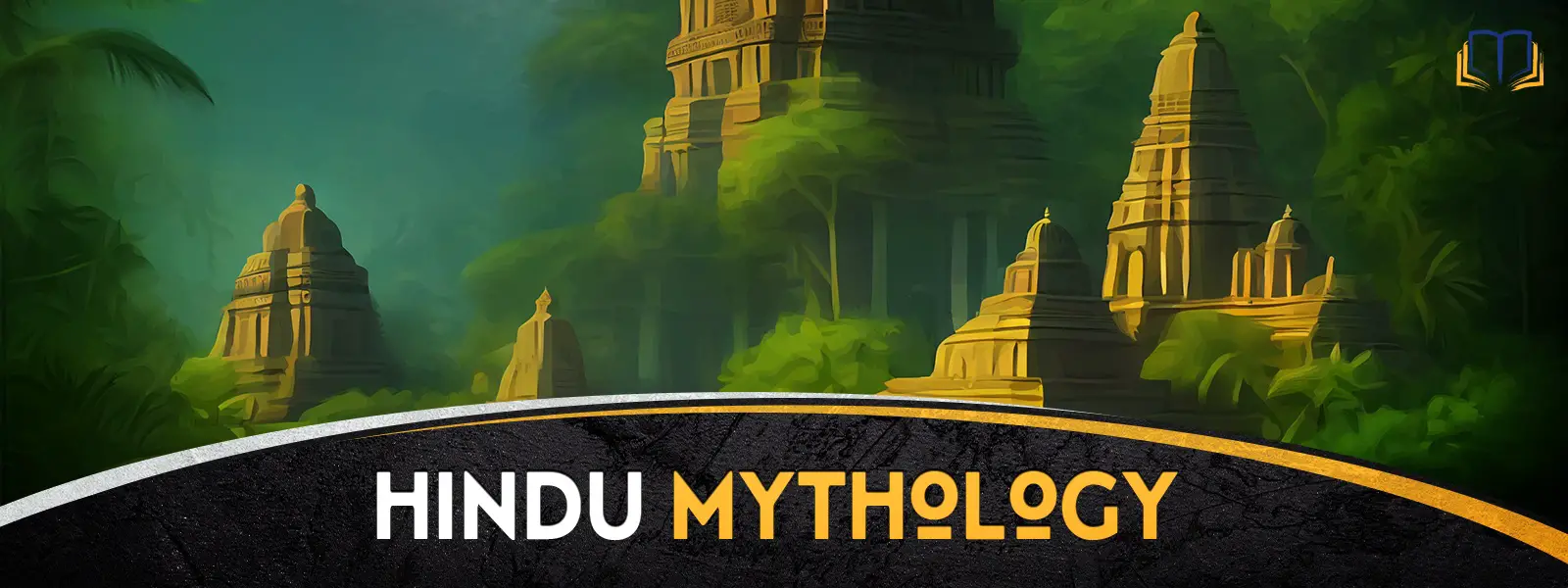
Hindu mythology is filled with complex and fascinating stories of gods, demons, and heroes. It centers around the myths and legends of the ancient Hindu religion, which originated in India and is still practiced by millions of people today. These myths often revolve around themes of karma, reincarnation, and the ultimate goal of liberation from the cycle of birth and death.
One of the most well-known Hindu myths is the story of the god Krishna, who is considered to be an avatar (or incarnation) of the supreme god Vishnu. He is known for his wisdom, his courage, and his love for the mortal woman Radha.
Another important figure in Hindu mythology is the goddess Durga, who is a warrior goddess who protects the world from evil. She is said to be the mother of the universe and to have the power to defeat even the most powerful demons.
The Hindu myths continue to inspire and captivate people to this day through literature, art, and popular culture.
Some related mythologies include:
- Scythian mythology
- Ayyavazhi mythology
- Tamil mythology
- Vedic mythology
- Buddhist mythology
- Manipuri mythology
- Romani mythology
Slavic Mythology
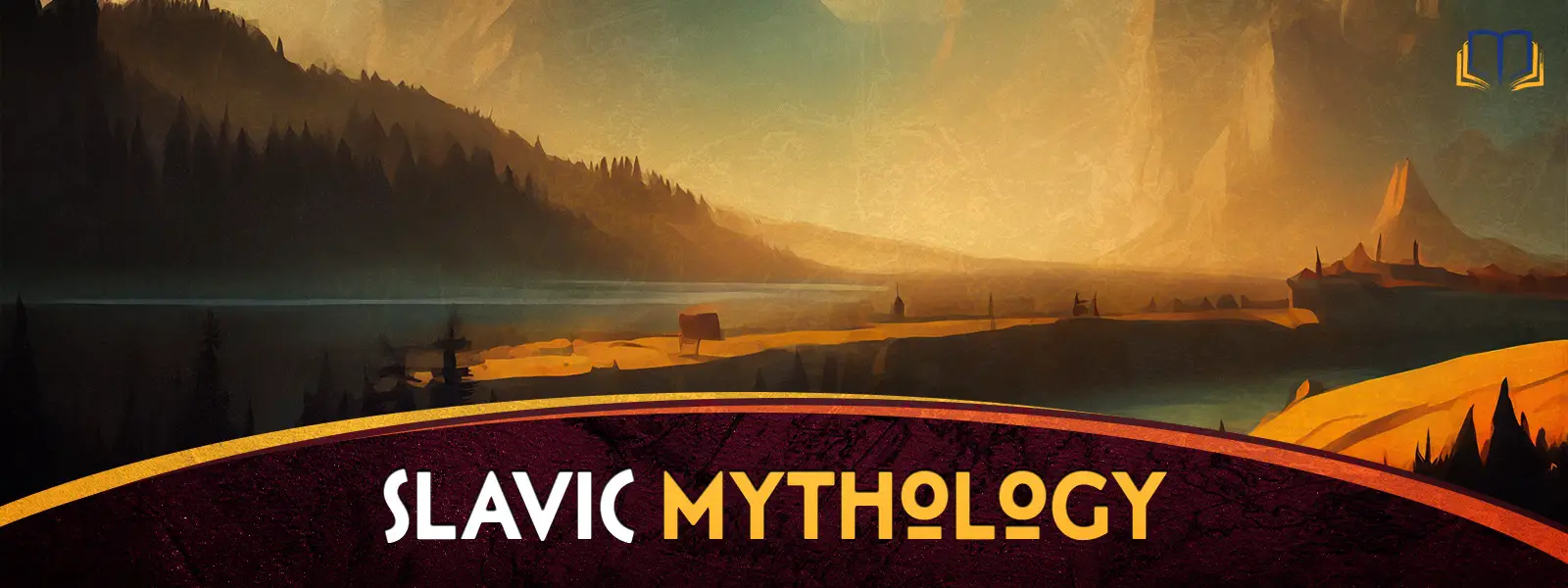
Slavic mythology is filled with rich and fascinating stories of gods, goddesses, and mythical creatures. It centers around the myths and legends of the ancient Slavic people, who lived in what is now Russia, Poland, and other parts of Eastern Europe. These myths often revolve around themes of nature, the cycle of the seasons, and the battle between good and evil.
One of the most well-known Slavic myths is the story of the god Perun, who was the god of thunder and the sky. He was said to wield a powerful thunderbolt and to be the protector of the Slavic people.
Another important figure in Slavic mythology is the creature Baba Yaga, who is a witch-like figure who lives in the forest. She is known for her magic powers and her ability to help or hinder those who seek her out.
The Slavic myths continue to inspire and captivate people to this day through literature, art, and popular culture.
Some related mythologies include:
- Baltic mythology
- Latvian mythology
- Lithuanian mythology
- Prussian mythology
- Hungarian mythology
- Paleo-Balkan mythology
- Albanian mythology
- Dacian religion
- Illyrian mythology
- Thracian religion
Chinese Mythology
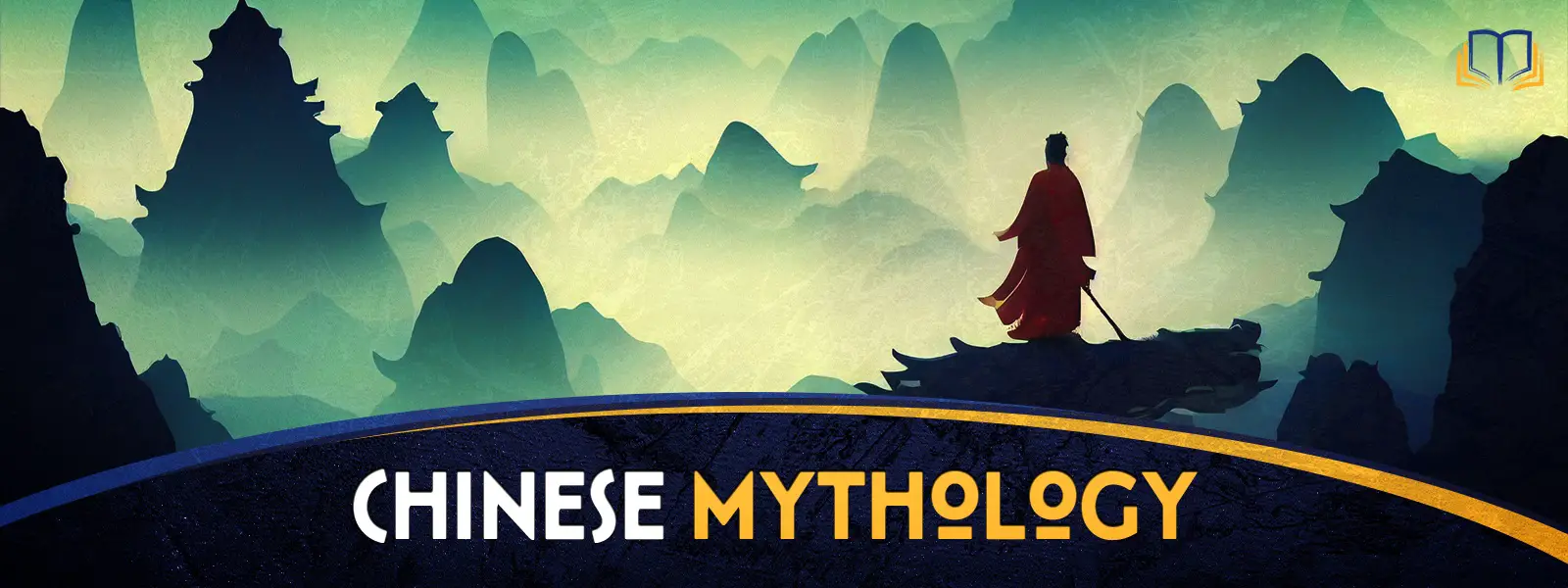
Chinese mythology is filled with ancient and fascinating stories of gods, goddesses, and mythical creatures. It centers around the myths and legends of the ancient Chinese civilization, which has a rich and complex history spanning thousands of years. These myths often revolve around themes of nature, the cycle of the seasons, and the harmony between humans and the universe.
One of the most well-known Chinese myths is the story of the god Nüwa, who was the goddess of creation. She is said to have created the world and to have shaped the first humans from clay.
Another important figure in Chinese mythology is the god Fu Xi, who is the god of wisdom and culture. He is said to have invented writing, music, and the arts, and to have taught the people how to live in harmony with each other.
The Chinese myths continue to inspire and captivate people to this day through literature, art, and popular culture.
Some related mythologies include:
- Ainu mythology
- Bai mythology
- Chinese mythology
- Manchu mythology
- Mongolian mythology
- Qiang mythology
- Ryukyuan mythology
- Siberian mythology
- Tibetan mythology
- Turkic mythology
Japanese Mythology
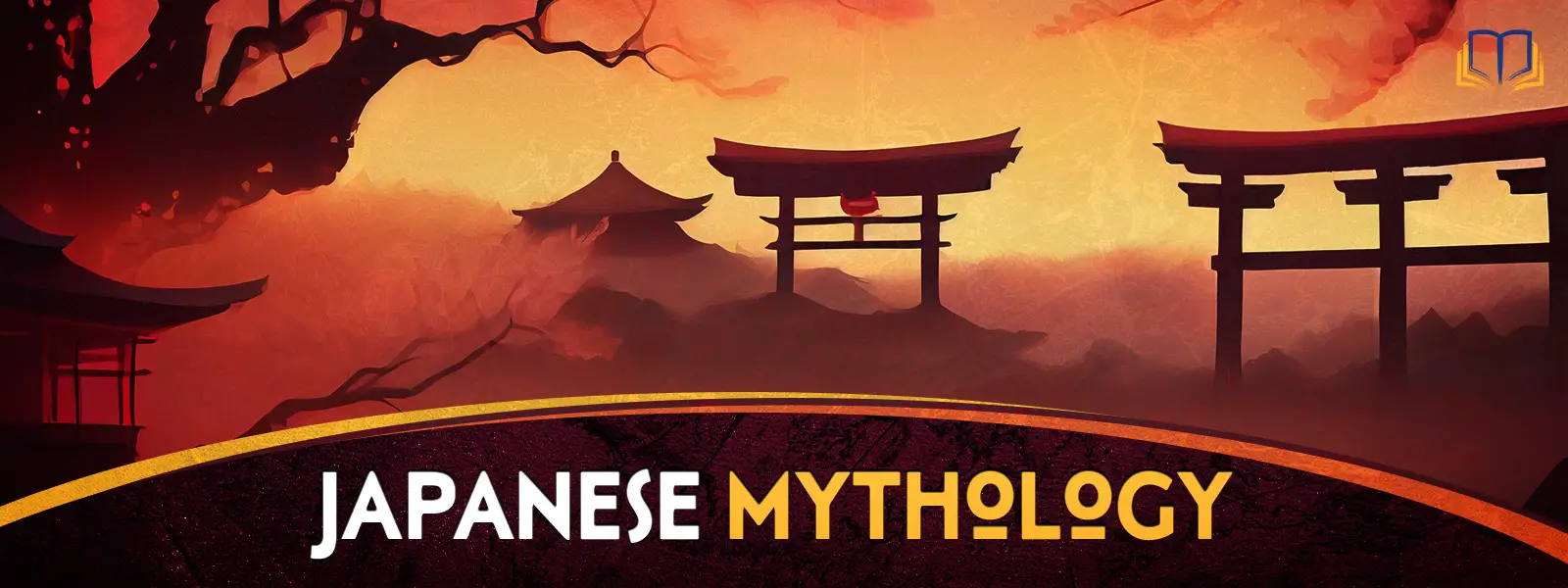
Japanese mythology is filled with beautiful and fascinating stories of gods, goddesses, and mythical creatures. It centers around the myths and legends of the ancient Japanese civilization, which has a rich and complex history spanning thousands of years. These myths often revolve around themes of nature, the cycle of the seasons, and the relationship between humans and the divine.
One of the most well-known Japanese myths is the story of the sun goddess Amaterasu, who is the most powerful of the gods. She is said to have created the world and to have brought light and warmth to the earth.
Another important figure in Japanese mythology is the god Tsukuyomi, who is the god of the moon and the night.
The Japanese myths continue to inspire and captivate people to this day through literature, art, and popular culture.
Some related mythologies include:
- Korean Mythology
Polynesian Mythology
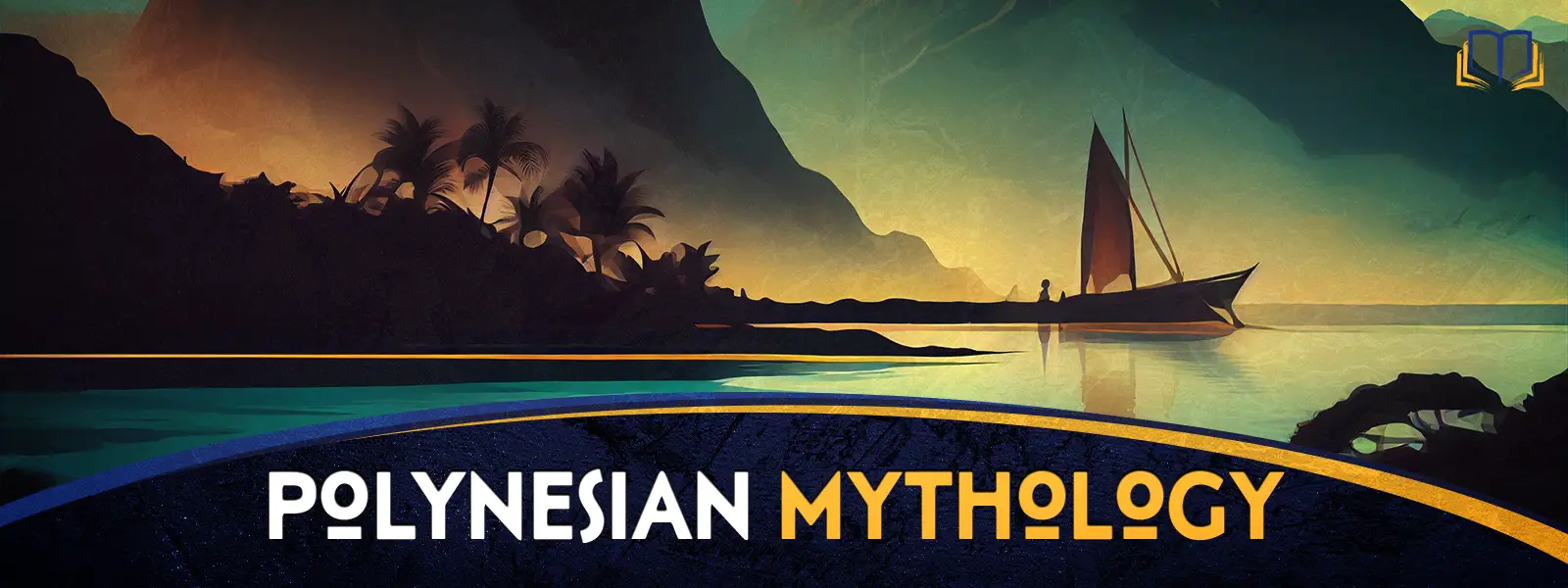
Polynesian mythology is filled with rich and fascinating stories of gods, goddesses, and mythical creatures. It centers around the myths and legends of the ancient Polynesian people, who lived in what is now Hawaii, New Zealand, and other parts of the Pacific Ocean. These myths often revolve around themes of nature, the sea, and the spiritual power of the ancestors.
One of the most well-known Polynesian myths is the story of the god Maui, who was a powerful demigod who performed many great feats. He is said to have created the islands of the Pacific and to have helped the people in their daily lives.
Another important figure in Polynesian mythology is the goddess Pele, who is the goddess of fire, lightning, and volcanoes. She is said to have the power to create new land and to control the forces of nature.
The Polynesian myths continue to inspire and captivate people to this day through literature, art, and popular culture.
Some included and related mythologies include:
- Burmese mythology
- Indonesian mythology
- Balinese mythology
- Malaysian mythology
- Philippine mythology
- Vietnamese mythology
- Thai mythology
- Australian Aboriginal mythology
- Melanesian mythology
- Fijian mythology
- Papuan mythology
- Micronesian mythology
- Hawaiian mythology
- Mangarevan mythology
- Māori mythology
- Rapa Nui mythology
- Samoan mythology
- Tahitian mythology
- Cook Islands mythology
Native American Mythology
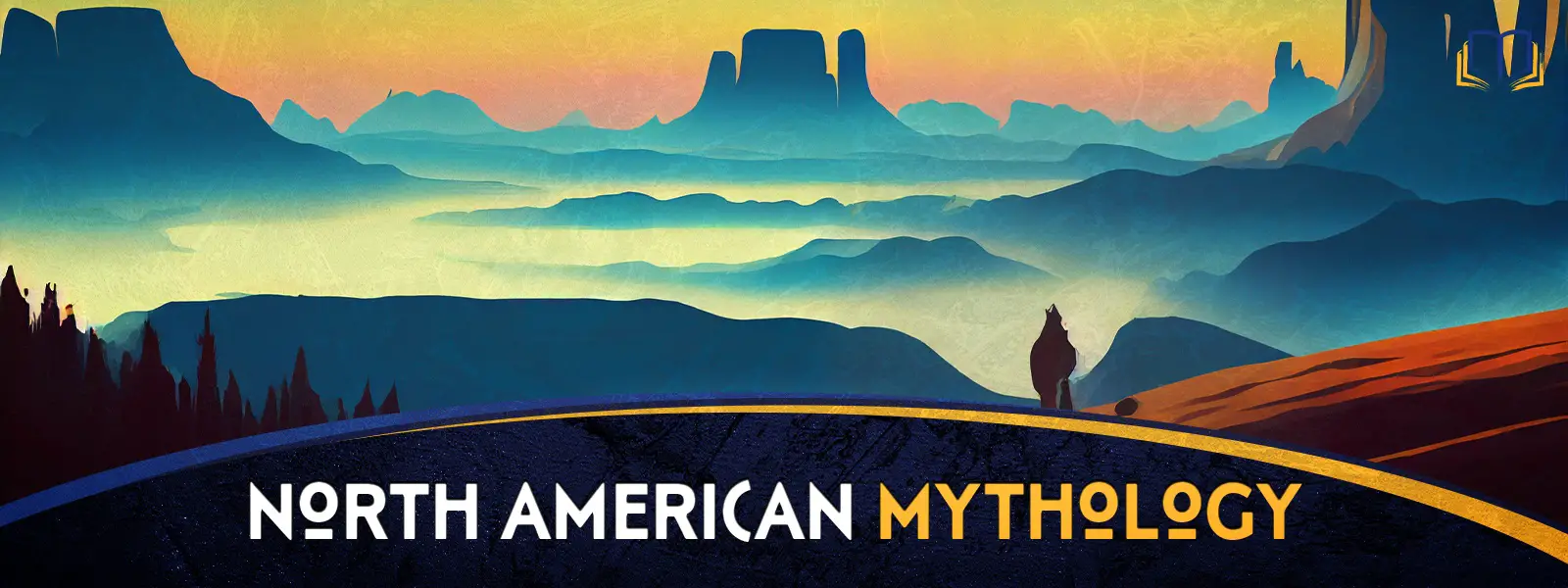
Native American mythology (meaning the mythology of the North American aboriginals) is filled with rich and fascinating stories of gods, goddesses, and mythical creatures. It centers around the myths and legends of the indigenous peoples of North and South America, who have a rich and diverse history stretching back thousands of years. These myths often revolve around themes of nature, the spiritual world, and the connection between humans and the natural world.
One of the most well-known Native American myths is the story of the trickster Coyote, who is a clever and mischievous figure who often gets himself into trouble. He is said to have the power to shape-shift and to be a source of wisdom and humor.
Another important figure in Native American mythology is the god Great Spirit, who is the supreme creator and ruler of the universe. He is said to be the source of all life and to be the guardian of the natural world.
The Native American myths continue to inspire and captivate people to this day through literature, art, and popular culture.
Some included and related mythologies include:
- Abenaki mythology
- Blackfoot mythology
- Cherokee mythology
- Choctaw mythology
- Creek mythology
- Crow mythology
- Haida mythology
- Hopi mythology
- Inuit mythology
- Iroquois mythology
- Lakota mythology
- Navajo mythology
- Nuu-chah-nulth mythology
- Ohlone mythology
- Pawnee mythology
- Tsimshian mythology
- Zuni mythology
Mesoamerican Mythology
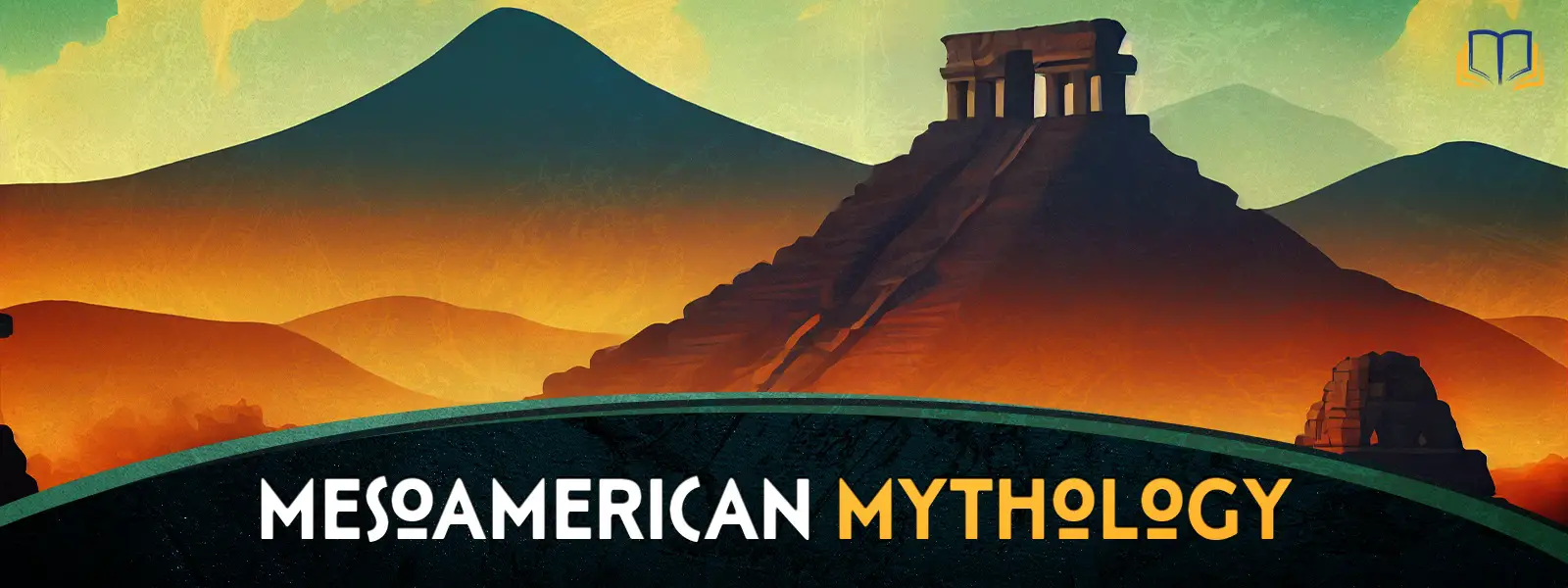
Mesoamerican mythology is filled with rich and fascinating stories of gods, goddesses, and mythical creatures. It centers around the myths and legends of the ancient Mesoamerican peoples, who lived in what is now Mexico and Central America. These myths often revolve around themes of creation, the natural world, and the cycles of time.
The Popol Vuh narrates the Maya creation account and the tales of the Hero Twins. In the story, the Creators create humans out of corn and the Hero Twins defeat the Death Lords in a ball game and become the Sun and the Moon.
Another important figure in Mesoamerican mythology is the god Quetzalcoatl, who is the god of wind, rain, and the sky. He is often depicted as a feathered serpent and is said to have the power to bring life and fertility to the earth.
The Mesoamerican myths continue to inspire and captivate people to this day through literature, art, and popular culture.
Some included and related mythologies include:
- Aztec mythology
- Maya mythology
- Mixtec mythology
- Olmec mythology
- Talamancan mythology
- Zapotec mythology
South American Mythology
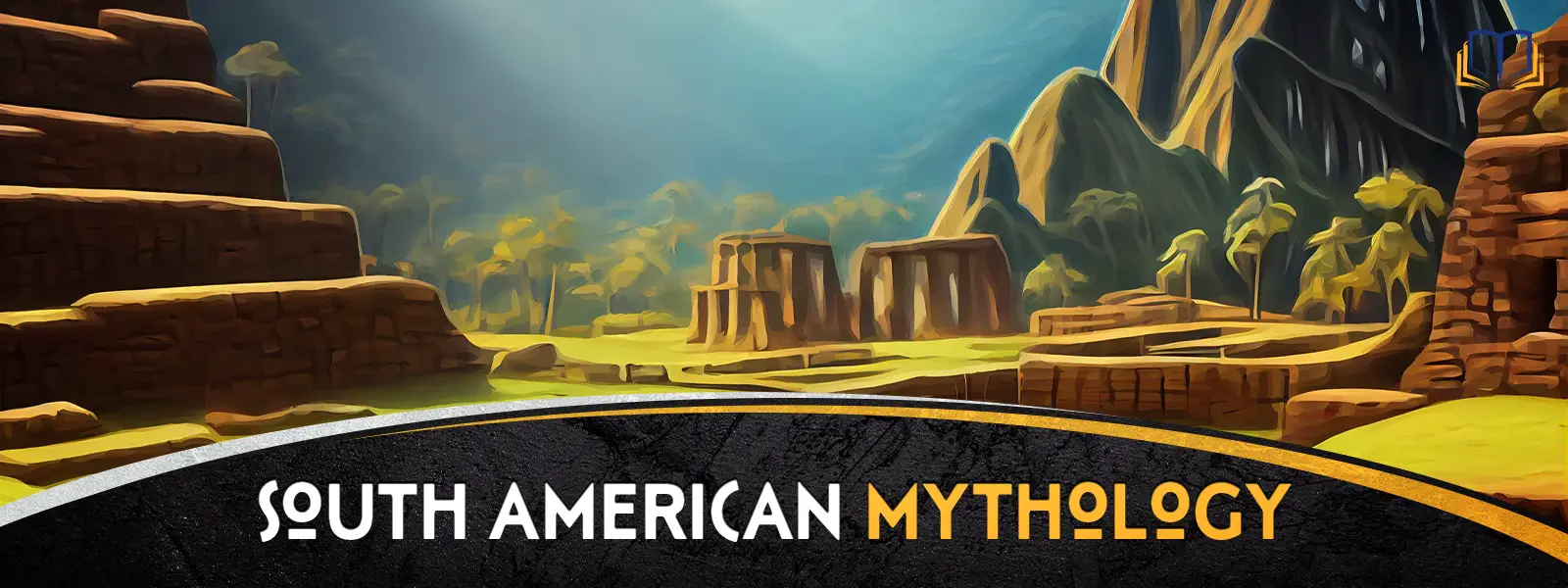
South American mythology is filled with rich and fascinating stories of gods, goddesses, and mythical creatures. It centers around the myths and legends of the ancient South American peoples, who lived in what is now Brazil, Argentina, and other parts of South America. These myths often revolve around themes of nature, the spiritual world, and the connection between humans and the natural world.
One of the most well-known figures in South American mythology is the god Viracocha, who is often referred to as the creator god. He is said to have created the universe and all the life that exists within it, as well as the sun, moon, and stars. In some myths, Viracocha is depicted as a powerful, wise, and benevolent god who is deeply concerned with the well-being of humanity. In others, he is depicted as a wrathful god who punishes those who do not follow his commands.
Another important figure in South American mythology is the god Inti, who is the god of the sun. Inti is the ancient Incan sun god and is revered as the national patron of the Inca state. He is considered a cluster of solar aspects and is associated with the origin and expansion of the Inca Sun Cult.
The South American myths continue to inspire and captivate people to this day through literature, art, and popular culture.
- Chilote mythology
- Guarani mythology
- Inca mythology
- Mapuche mythology
- Muisca mythology
Abrahamic Mythology
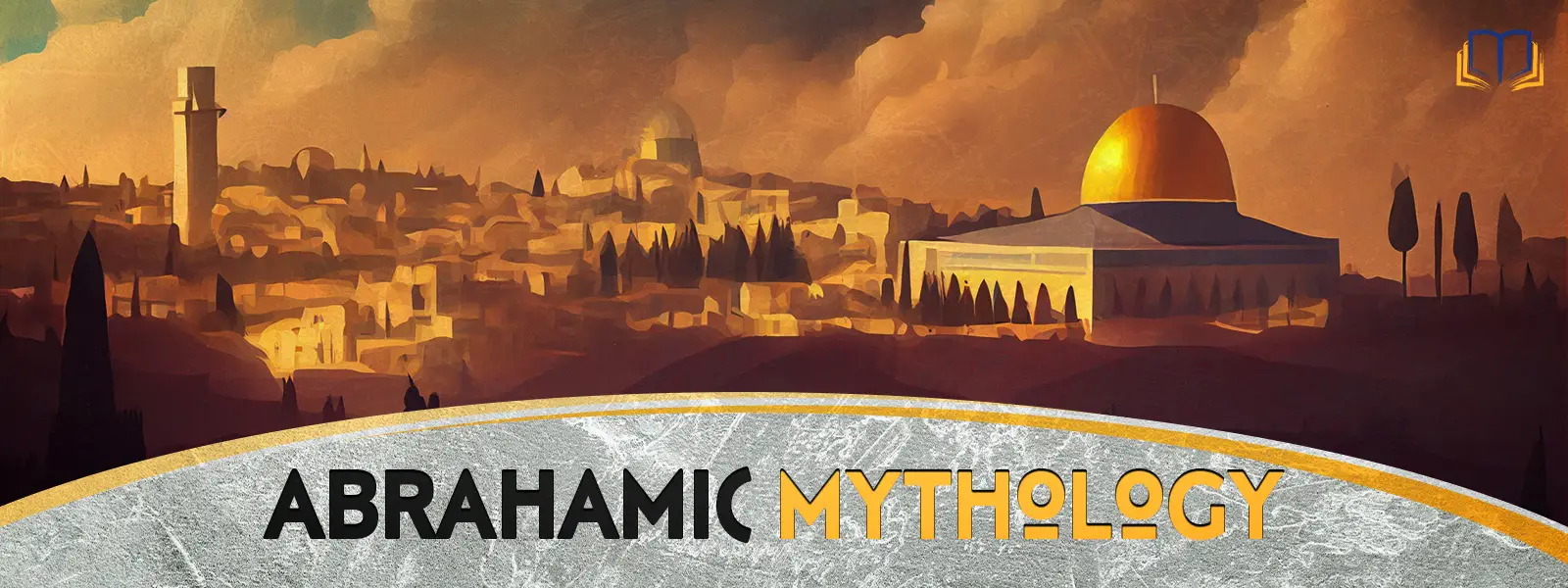
In Abrahamic mythology, we have many stories that are central to the beliefs of Christians, Jews, Muslims and more. These stories focus on the history and teachings of the Hebrew people, the life of Jesus Christ, and the teachings of Muhammad.
The Bible tells the story of God creating the world and the first humans, Adam and Eve. It also describes the great floods and other natural disasters, as well as the rise and fall of great civilizations.
Important characters in Abrahamic mythology include Adam and Eve, Abraham, Moses, David, and of course Jesus Christ.
The Bible is full of stories about conflict, both between humans and between good and evil. It includes powerful symbols such as the Ark of the Covenant, the burning bush, and the ten plagues of Egypt. The stories also include themes of redemption, sacrifice, and the struggle between good and evil.
These stories continue to inspire and influence people around the world to this day.
Some included and related mythologies include:
- Jewish Mythology
- Christian Mythology
- Islamic Mythology
- Arabian mythology
- Canaanite mythology
Arthurian Legends
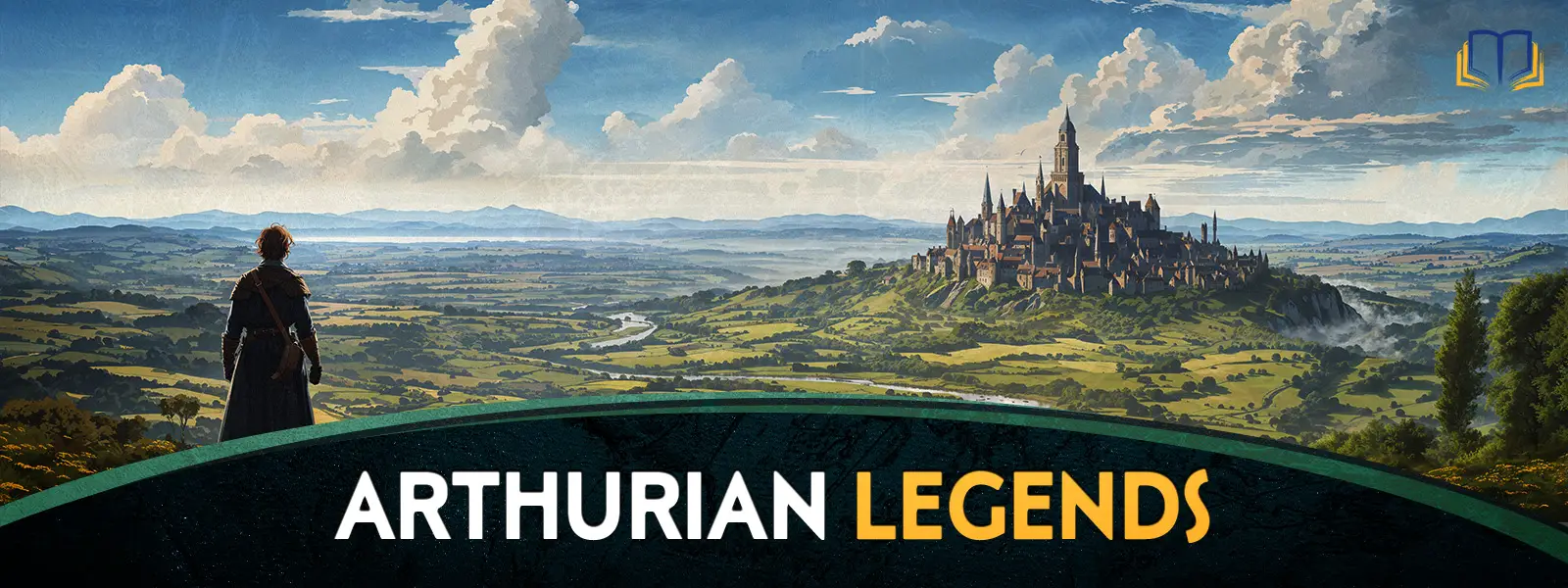
Lastly, we have the Arthurian Legends, which are related to Celtic mythology, though are sometimes considered its own thing.
The Arthurian myths center around King Arthur, who is the son of Uther Pendragon & Igraine. He eventually grows up, takes the sword from the stone, and becomes King.
Other important characters in Arthurian myth include Merlin, Lancelot, Guinevere, Morgan le Fay, and others. While some are ficticious, many have their roots in actual history…
The Arthurian legends are rife with conflict, heroism, and romance. It includes memorable weapons like Excalibur, terrifying beasts like the Questing Beast, daring quests for the Holy Grail, and so much more.
The Arthurian mythos eventually ended in tragedy, with the affair between Guinevere and Lancelot leading to King Arthur’s final battle came from Mordred. Almost everyone dies, including Arthur himself, but his legend lived on in countless books and movies since.

